Search for topics or resources
Enter your search below and hit enter or click the search icon.

Content marketing takes time. It can take months — even a year or more — to see real traction. The payoff is worth it, but the wait can be frustrating.
I get it. Since 2022, I’ve been writing blogs for Zoe Marketing & Communications. Marketing blogs are a crowded field, and I’ve seen firsthand how long growth takes.
Through my experience — and research — I’ve pinpointed five key reasons content marketing is a long-term strategy.
Whether you’re going solo or working with an agency, here’s why success requires patience and commitment.
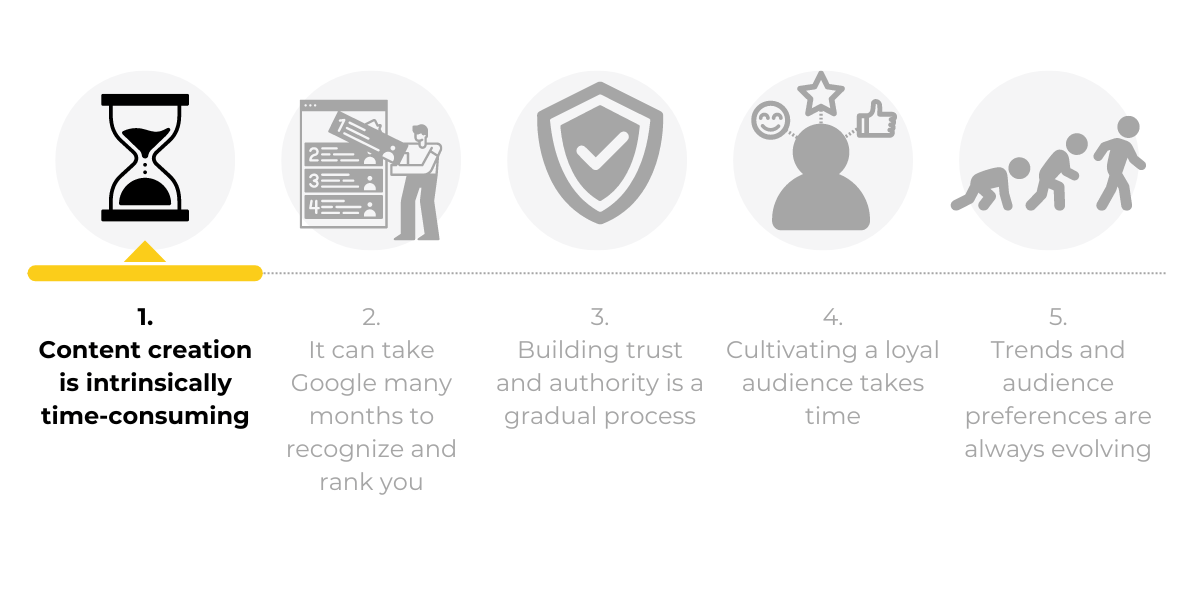
Writing solid content is a process, even with AI tools. AI churns out words fast, but it lacks personal insight — and Google values unique, high-quality content.
Creating strong blogs and articles requires:
For a Zoe blog, I typically spend 3 hours researching and writing. Add design, editing and approvals, and it’s even more time-consuming.
A strong content plan requires at least 2-3 posts per week to see results.
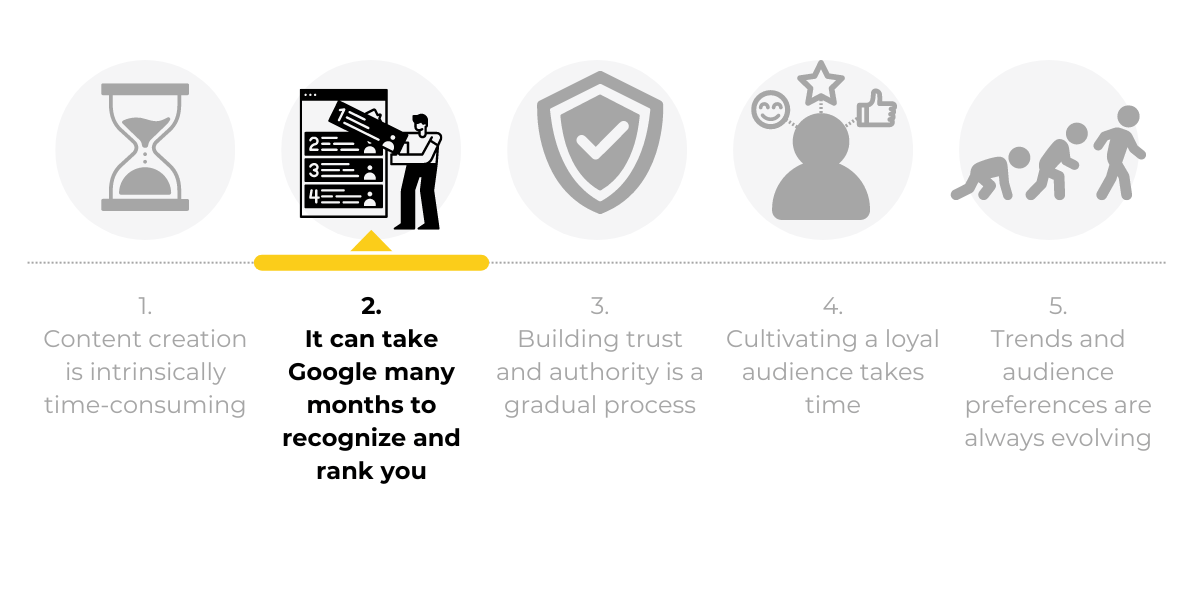
It took Zoe four months to start ranking for certain keywords. That’s because Google’s process is, well, slow.
Google evaluates content based on:
Google’s algorithm is always changing, too. It doesn’t take too many searches to see that results pages keep shifting. Competitive keywords take even longer to break into.
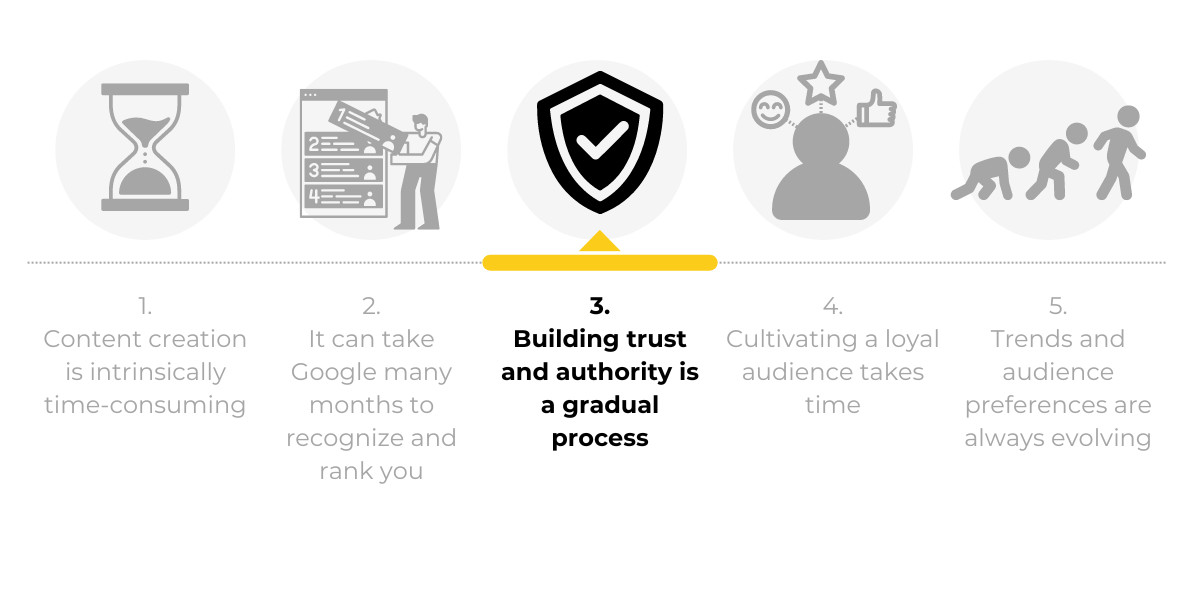
Google measures content credibility using EEAT: expertise, experience, authority and trust. These factors take 4-12 months to develop.
Consistently publishing high-value content:
Think of it this way: You’re putting time and effort into helping people. That shows them you’ll take the same care to help them when they become your customers.
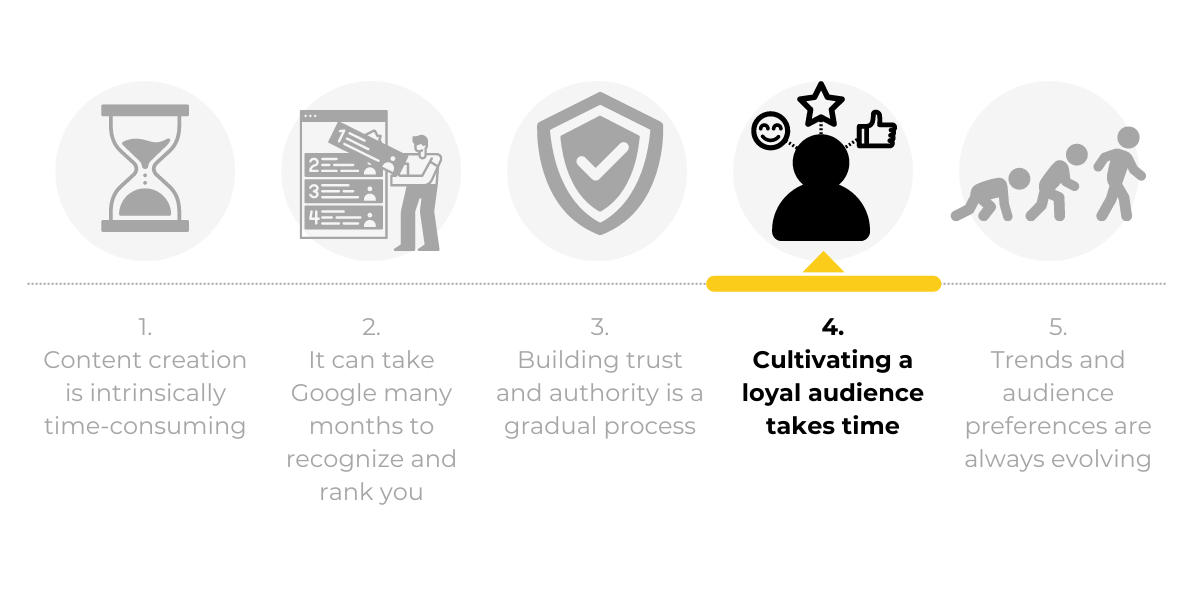
Returning readers often become loyal customers — but loyalty takes time.
70% of consumers say content marketing helps them feel connected to a company, one study notes. But with rising costs, people demand more value.
Quality content, especially in multiple places, grows loyalty through:
When done right, content strengthens trust and keeps you top of mind.
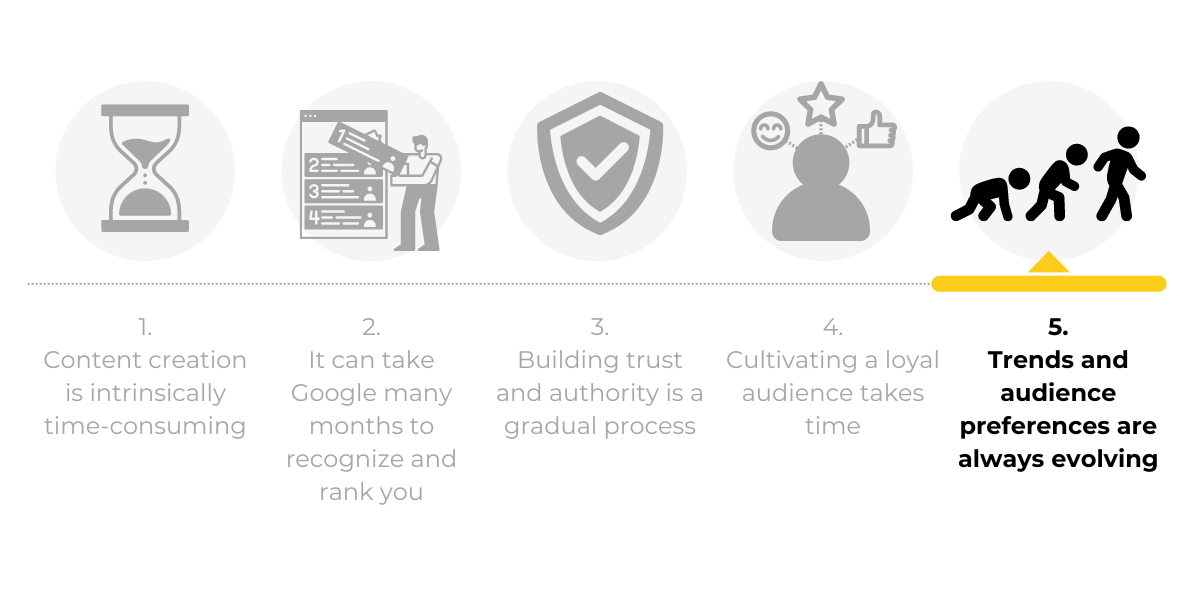
What worked last year — or even last month — won’t always work now. I’ve seen this firsthand in my SEO experience over the past 15 years:
On top of that, you have to update and refresh your content regularly to stay relevant. Content isn’t “set and forget.” It’s an ongoing process.
Expectations are key. Content marketing works, but it’s not instant. Here, I broke down five reasons why — from the time-intensive creation process to Google’s slow recognition and the evolving digital landscape.
Need help? Talk to us. Zoe Marketing & Communications has deep experience creating engaging, strategic content.
If you’re still exploring, check out:
As Zoe Marketing & Communications’ content manager, Kim Kovelle brings over 20 years of writing and editing experience in metro Detroit. She has strong roots in community journalism and a knack for making complicated topics make more sense.
Topics:
